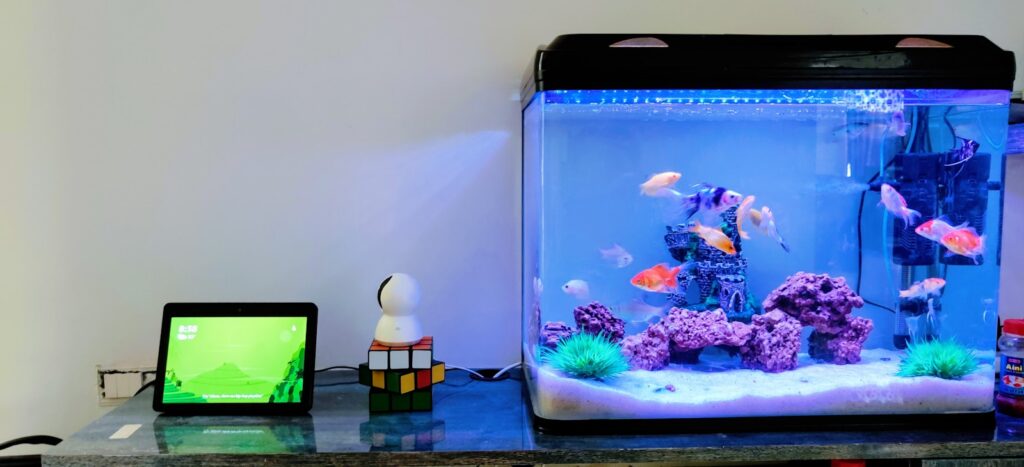How to setup Basic Aquarium, Creating your own aquarium can be a rewarding and fascinating hobby that allows you to design and customize a unique underwater world. In this step-by-step tutorial, we’ll introduce you to the basics of aquarium DIY, from selecting the right materials to setting up and maintaining your aquatic habitat.
Materials Needed:
- Aquarium Tank
- Stand or Base for tank
- Aquarium Heater (if needed)
- Substrate (gravel, sand, or substrate)
- Aquatic Plants
- Aquarium Filter
- Decorations (rocks, driftwood, or artificial decor)
- Aquarium Lighting
- Water Conditioner
- Fish Food
Step-by-Step Tutorial:
- Choose Your Aquarium Tank:
- Select a suitable aquarium tank based on the size and type of fish or aquatic animals you plan to keep. Consider factors such as space availability, budget, and the type of environment you want to create.
- Set Up the Aquarium Stand:
- Place the aquarium stand or base in a sturdy and level location, ensuring it can support the weight of the filled aquarium tank. Follow the manufacturer’s instructions for assembly and placement.
- Install the Aquarium Filter:
- Install the aquarium filter according to the manufacturer’s instructions. The filter helps to maintain water quality by removing debris, toxins, and excess nutrients from the aquarium.
- Add Substrate:
- Rinse the substrate (gravel, sand, or substrate) thoroughly to remove any dust or debris before adding it to the aquarium. Spread the substrate evenly across the bottom of the tank to create a natural-looking foundation.
- Arrange Aquatic Plants and Decorations:
- Arrange aquatic plants, rocks, driftwood, and other decorations to create a visually appealing and stimulating environment for your aquatic inhabitants. Be mindful of providing hiding spots and shelter for fish and other aquatic creatures.
- Install Aquarium Lighting:
- Install aquarium lighting fixtures above the tank to provide adequate illumination for both plants and fish. Choose lighting options that mimic natural daylight and promote healthy plant growth.
- Fill the Aquarium with Water:
- Fill the aquarium with dechlorinated water to the desired level, leaving enough space at the top to accommodate equipment such as filters and heaters. Use a water conditioner to remove chlorine and other harmful chemicals from tap water.
- Cycle the Aquarium:
- Allow the aquarium to cycle for several weeks to establish a stable and healthy biological filtration system. Monitor water parameters such as ammonia, nitrite, and nitrate levels regularly during the cycling process.
- Introduce Fish and Aquatic Animals:
- Once the aquarium has completed its cycling process and water parameters are stable, gradually introduce fish and aquatic animals to their new home. Research the specific care requirements and compatibility of each species before adding them to the aquarium.
- Maintain and Monitor:
- Maintain the aquarium by performing regular water changes, cleaning the substrate, and monitoring water parameters to ensure optimal water quality and a healthy aquatic environment.



